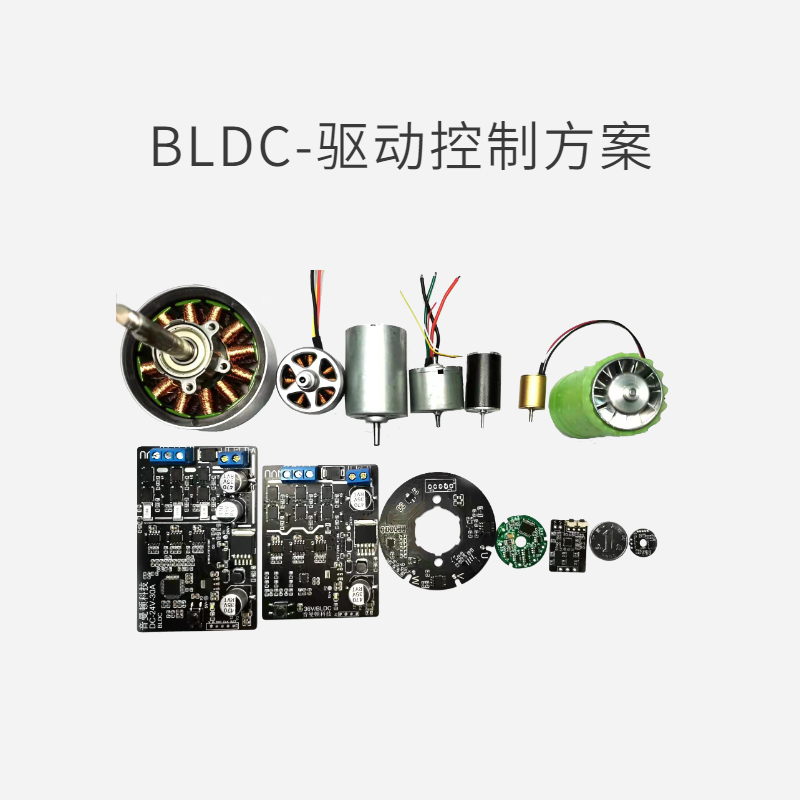Brushless DC (BLDC) motor control solution
Time:2023-02-18
Views:1324
Brushless DC (BLDC) motors are rapidly becoming the natural choice for applications with high reliability, high efficiency and high power-to-volume ratio. These motors provide a large amount of torque in a wide speed range and have similar torque and speed performance curves (although brush motors can provide greater static torque).

BLDC motor has remarkable reliability because it eliminates the brush used in the commutation of traditional DC motor. The brush wear reduces the performance of the motor and must be replaced eventually. On the contrary, when it operates within the rated parameters, the expected life of BLDC motor can exceed 10000 hours or more. Compared with traditional equipment, this reduction in service life and subsequent maintenance and spare parts costs can offset the high initial cost of the motor.

BLDC motor is entering the most cost-conscious application field. For example, in the automotive sector, the use of BLDC motors is soaring. Automobile manufacturers are particularly attracted by the efficiency of electrical energy conversion in mechanical work, which helps to reduce the demand for vehicle power system (Figure 1). According to analyst IMS, by 2018, 600 million research BLDC motors will be used for light vehicles driven by internal combustion engines,
BLDC‘s interest in electric motors has prompted chip suppliers to develop customized monolithic chips for the electronic control system of the unit. This paper will introduce the BLDC motor control chip - the device used to drive the inverter bridge, and finally activate the motor coil to control the speed and direction.
Reduce hall sensor fault
The key technical progress of FCM8201 is that pulse width modulation (PWM) can be selected. There are two PWM modes: sine wave mode and square wave mode. Square wave mode includes PWM-PWM and PWM-ON technologies to improve motor drive efficiency.
Fairchild also has a built-in Hall signal conditioning circuit, which can input 3 to 36 for each sensor μ S jitter time. When the Hall sensor signal conversion is slow, the circuit reduces burrs - and subsequent errors.
The FCM8201 has no external microcontroller and can be used in a separate configuration. Or if the designer wants to add more motor control functions than the standard equipment, the external can connect the MCU (SPI) interface through the serial external interface. Figure 2 shows a typical independent application circuit of FCM8201. Only a few peripheral components are needed to complete the BLDC motor control circuit.
Sensorless control adopts motor flux
The sensorless BLDC motor cancels the Hall sensor, but estimates the position of the coil according to the size of the back EMF generated when the motor rotates, and determines the correct commutation sequence.
Sensorless control is a popular technology, because it simplifies the mechanical design of the motor, but its disadvantage is that the motor will not generate back EMF when it is stationary, and the motor is rarely operated at low speed. This makes it difficult for the controller to determine the position of the coil.
For low cost BLDC installation, TI introduced InstaSPIN-BLDC motor control technology to solve this problem. The company said that InstaSPIN-BLDC is a sensorless control technology. In the field test of more than 50 different motor types, each motor can start and run in less than 20 seconds. In short, TI describes InstaSPIN-BLDC as a three-phase BLDC software method to perform sensorless steering on the motor. According to the company, its advantages include very fast motor debugging, powerful control even at low speed, and excellent ability to exceed speed interference.
For other sensorless BLDC different control technologies based on the zero-crossing sequence of back electromotive force, InstaSPIN-BLDC monitors the magnetic flux of the motor to determine when to replace the motor. With the help of Figure 3, the user determines the flux signal in the drawing window and sets the flux threshold slider to specify the flux level that the motor should replace. TI verifies the best commutation by observing the phase voltage and current waveforms displayed on the GUI.
The low sensor is different from the magnetic flux signal BLDC. The low back electromotive force signal generated by the low speed motor results in poor signal to noise ratio (SNR) performance. The company claims that InstaSPIN-BLDC can achieve more stable operation at low speed and provide more reliable motor starting even under heavy load.
Flexible design
Some manufacturers provide driver chips without integrated processors to be familiar with the use of specific MCU designers to monitor circuits. Or, like the Fairchild chips mentioned above, some suppliers allow designers to add more powerful external MCU to cover internal processors.
The advantage of sensorless and sensorless BLDC motors is that they are more and more used in traditional motor-led applications. Although it is more expensive than the latter, this early cost can offset the lower maintenance cost and the long life of BLDC motor.
Designers who want to use these light, compact and powerful motors will find it easier to design control systems by introducing chips and design tools from major chip suppliers. Designers have more flexibility in design, thus increasing the opportunity to distinguish between the final product and competitors.
|
Disclaimer: This article is transferred from other platforms and does not represent the views and positions of this site. If there is any infringement or objection, please contact us to delete it. thank you! |











